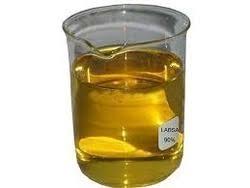| Product Details: | |
| Minimum Order Quantity | 55 Kilogram |
| Application | Detergent powder, Detergent Cake, Liquid Detergent, Washing agent, Distemper, Emulsier etc. |
| Packaging Type | Carboys (Can), Drum (Barrels) & Tanker |
| Packaging Size | 55 Kgs Carboys (Can), 230 Kgs Drum (Barrel) & Tanker load. |
| Grade Standard | Class A |
| Form | Liquid |
| Purity | 90% |
| Brand | Akshar Group |
| H.S. Code | 3402.11 |
| CAS No. | 27176-87-0 |
Manufacturers and Suppliers of linear alkylbenzene sulfonic acid (LABSA) mumbai
akshar international is one of the largest chemical supplier and manufacturer in mumbai. we provides a list of chemicals also we provide one of the best quality linear alkylbenzene sulfonic acid (LABSA). we provide linear alkylbenzene sulfonic acid (LABSA) with Minimum Order Quantity 55kg online. which really Used as Detergent powder, Detergent Cake, Liquid Detergent, Washing agent, Distemper, Emulsier etc.

Linear Alkylbenzene Sulfonic Acid
Alkylbenzene sulfonates are a class of anionic surfactants, comprising of a hydrophilic sulfonate head-gathering and a hydrophobic alkylbenzene tail-gathering. Alongside SLES they are one of the most seasoned and most generally utilized engineered cleansers and might be found in various individual consideration items (cleansers, shampoos, toothpaste and so on.) and family care items (clothing cleanser, dishwashing fluid, splash cleaner etc.). They were first presented during the 1930s as spread alkylbenzene sulfonates (BAS) anyway following natural concerns these were supplanted with straight alkylbenzene sulfonates (LAS) amid the 1960s. Since then generation has expanded essentially from around 1 million tons in 1980, to around 3.5 million tons in 2016, making them most created anionic surfactant after cleansers.
Broad frothing of the River Aire, England – 1974
Stretched alkylbenzene sulfonates (BAS) were first presented in the mid 1930's and saw noteworthy development from the late 1940's onwards, in early writing these manufactured cleansers are frequently condensed as syndets. They were set up by the Friedel– Crafts alkylation of benzene with 'propylene tetramer' (likewise called tetrapropylene) trailed by sulfonation. Propylene tetramer being a wide term for a blend of mixes framed by the oligomerization of propene, its utilization gave a blend of exceedingly extended structures.
Contrasted with customary cleansers BAS offered better resilience than hard water and better foaming.[5] However, the very fanned tail made it hard to biodegrade.[6] BAS was generally accused for the development of huge spans of stable froth in regions of wastewater release, for example, lakes, waterways and seaside zones (ocean froths), just as frothing issues experienced in sewage treatment[7] and tainting of drinking water.[8] As such BAS was eliminated of most cleanser items amid the 1960s, being supplanted with straight alkylbenzene sulfonates (LAS). It is as yet imperative in certain agrochemical and mechanical applications, where quick biodegradability is of decreased significance.
A case of a straight aklylbenzene sulfonate (LAS)
Straight alkylbenzene sulfonates (LAS) are arranged modernly by the sulfonation of direct alkylbenzenes (LABs), which can be set up in a few ways.[2] In the most widely recognized course benzene is alkylated by long chain monoalkenes (for example dodecene) utilizing hydrogen fluoride as a catalyst.[9] The cleansed dodecylbenzenes (and related subordinates) are then sulfonated with sulfur trioxide to give the sulfonic acid.[10] The sulfonic corrosive is in this way killed with sodium hydroxide.[1] The expression "direct" alludes to the beginning alkenes as opposed to the last item. The alkylation of straight alkenes, even 1-alkenes, for example, 1-dodecene gives a few isomers of phenyldodecane.
Structure property connections
Under perfect conditions the cleaning intensity of BAS and LAS is fundamentally the same as, anyway LAS performs somewhat better in ordinary use conditions, because of it being less influenced by hard water. Within LAS itself the detergency of the different isomers are reasonably similar, anyway their physical properties (Krafft point, frothing and so on.) are discernibly different. specifically the Krafft purpose of the high 2-phenyl item stays beneath 0 °C up to 25% LAS while the low 2-phenyl cloud point is ∼15 °C. This conduct is frequently misused by makers to make either clear or overcast items. some other product provide ACETIC ACID
Ecological destiny
Biodegradability has been well studied, and is influenced by the isomerization (spreading). The salt of the straight material has a LD50 of 2.3 mg/liter for fish, about 4x more lethal than the spread compound; anyway the direct compound biodegrades unquestionably more rapidly, settling on it the more secure decision after some time. It is biodegraded quickly under vigorous conditions with a half-existence of roughly 1– 3 weeks; oxidative debasement starts at the alkyl chain. Under anaerobic conditions it corrupts all around gradually or not in the slightest degree, making it exist in high fixations in sewage slime, yet this isn't believed to be a reason for worry as it will quickly corrupt once came back to an oxygenated domain.
